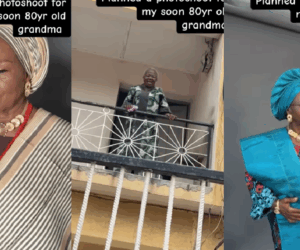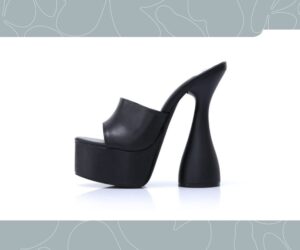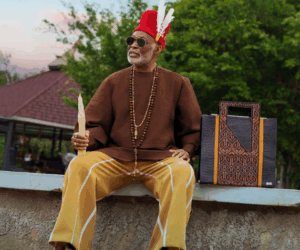
It might be some harmless fun but TikTok’s latest trend says more than it means to. It started when Love Island USA star Olandria shared a video balancing a pair of sunglasses across her waist, and they fit perfectly. She tried another pair through the back of her waist, same result. People joked, “How many people can do this?” and suddenly, it became a challenge.
@thenewsrib OLANDRIA THIS WAISTTTT 😍 #explore #celebrity #olandria #loveislandusa #loveisland ♬ original sound – 𝐓𝐇𝐄𝐍𝐄𝐖𝐒𝐑𝐈𝐁
It’s harmless, but it’s hard to miss what’s really being celebrated. The problem is, the challenge didn’t start here. It’s been here a while and originated from old eating disorder circles, where it was once a “test” of thinness.
That’s what makes it uncomfortable: how quickly the internet can turn a harmful measure of body size into viral content. Watching it spread now, it feels like the same old beauty ideals are just finding new filters and hashtags.
nobody’s saying she’s bodychecking, the sunglasses thing used to be a bodychecking trend years ago & people also did it with headphones i believe. that’s why people r confused/upset
— ami (@glindamiu) October 28, 2025
Fashion’s quiet return to exclusivity
You can tell a lot about the times from fashion week runways. Over the last few years, designers have made a big deal about diversity, including size, race, and gender. But lately, it’s been looking a lot less diverse.
At Paris Fashion Week Spring/Summer 2026, only a handful of brands, like Nina Ricci and BOSS, featured plus-size models like Ashley Graham. Everywhere else, the message was clear: thin is in again. Milan Fashion Week was even worse. Reports said little to no single plus-size models appeared on the runway.
It’s such a strange reversal. We went from celebrating inclusion as progress to quietly watching it disappear. When I think about how much effort went into pushing for that change, it feels like a betrayal, not just from fashion but from the culture that once claimed to care about representation.
It feels like we’re back to chasing ‘thin. Scroll through your feed, and it’s hard not to notice. Influencers are shrinking overnight, jawlines are sharper, there are buccal fat removal procedures, and the ‘slim chic’ aesthetic is creeping back. It’s a low-key shift that’s been building for a while, and now, it’s impossible to ignore. I don’t think it’s driven by nostalgia.
The body positivity movement that once made everyone feel seen suddenly feels like a distant memory. There was a time you couldn’t scroll for two minutes without seeing a post that said, ‘All bodies are good bodies.’ Now, what we’re seeing looks a lot like the early 2000s all over again, and honestly, it’s worrying.
The Year Prescriptions Became Irrelevant
At the centre of this shift is Ozempic. A drug that wasn’t even made for weight loss. It’s meant for people with type 2 diabetes to help regulate blood sugar and prevent serious complications. But once social media found out that it also curbs appetite and leads to fast weight loss, it became the new beauty hack for the rich and famous.
I first saw it trending a few years back under hashtags like #Ozempic and #OzempicChallenge. People were showing before-and-after videos with captions like ‘Nothing else worked until now.’ Over 250 million views later, pharmacies were struggling to keep it in stock, and the FDA had to list it as ‘currently in shortage.’
Influencers are slimmer. Celebrities are dropping sizes. The aspirational look has shifted back to being thin, controlled, and small.
Which does make me wonder, was body positivity ever real, or was it just another aesthetic phase we cycled through like every other fashion era?
Read Also: Why Many Nigerian Books Are Sad…and Why That’s Okay
Maybe the problem is that a lot of what we called body positivity was never real activism. It was branding. Another era of “love yourself” campaigns and size-inclusive collections that ended as soon as the hype did. Once inclusivity stopped being profitable, the message quietly faded. It’s the same thing we’ve seen with almost every movement that once felt revolutionary and ended up as marketing lines.
That’s the part that stings. Because for a while, people finally saw themselves online without filters or shame. There were stretch marks and normalcy, until the internet decided it wanted control again.
We can still follow creators who show up as they are, call out brands that glamorise only one body type, and remember that confidence isn’t a trend. The standards will keep changing, but how we see ourselves doesn’t have to.








